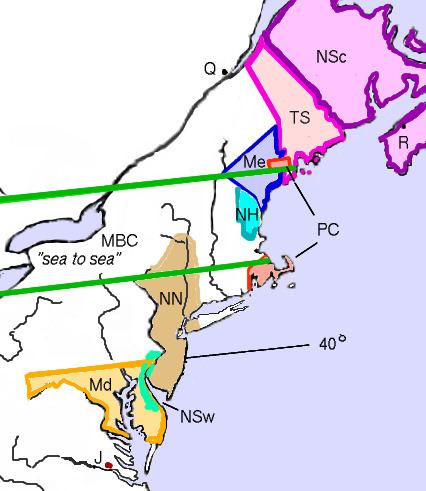 | ||
This article provides a listing and map of English colonial grants in North America during the years 1621 to 1639.
Contents
Grants prior to 1621 (and not shown on the map) include Sir Humphrey Gilbert's 1578 grant for Newfoundland, the Society of Merchant Venturers, the London and Bristol Company, the Virginia Company (the London Company and the Plymouth Company) and the Plymouth Council for New England. The previously existing Jamestown, founded in 1607 by the London Company, is denoted as J.
Such grants were usually in the form of land patents, which specified the right to establish colonial settlements within a specified region. Often such patents were granted by The Crown, but at times such patents were granted secondarily, as in the case of the grant of the Province of Maine by the Plymouth Council for New England.
Often such grants were overlapping and apparently contradictory. This feature was often by design, resulting in competitive colonization within a certain area by two or more private ventures.
